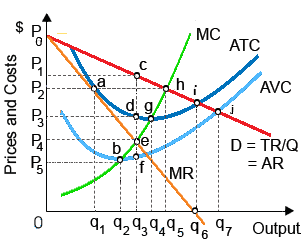HoloIMAGine has patented a holographic technology which makes 3-D photography obtainable to consumers. There level of sales and production at that HoloIMAGine would minimize its average cost [ATC] of production corresponds to as: (1) point b and output q2. (2) point e and output q3. (3) point g and output q4. (4) point h and output q5. (5) point j and output q7.

Hello guys I want your advice. Please recommend some views for above Economics problems.